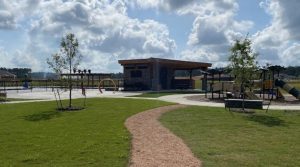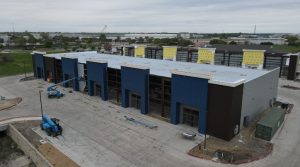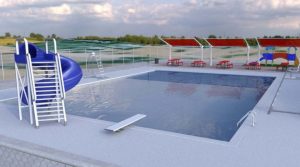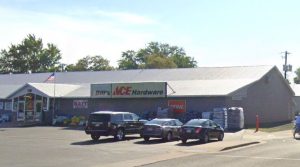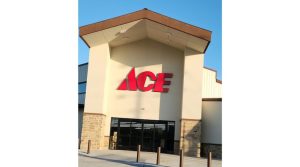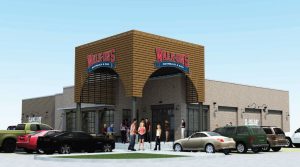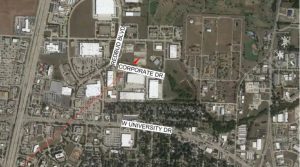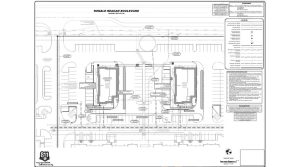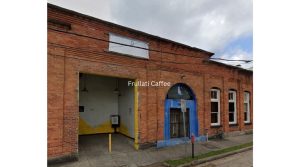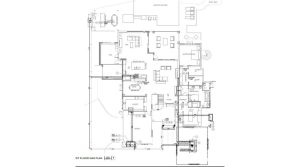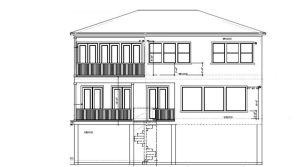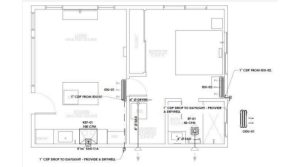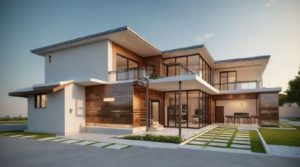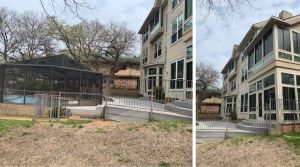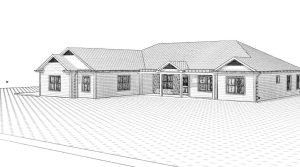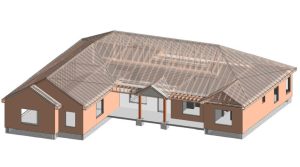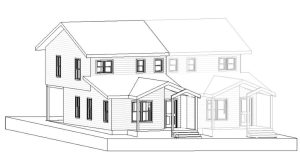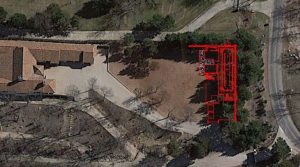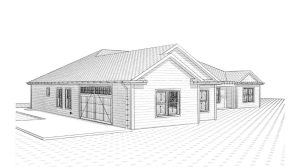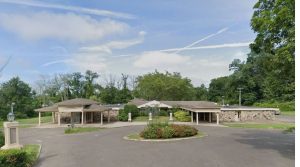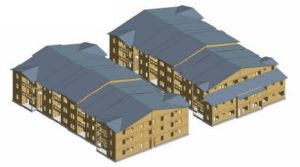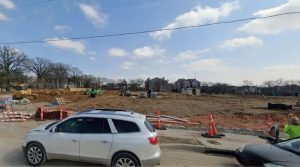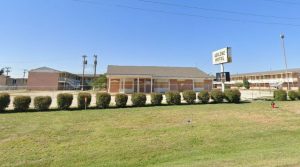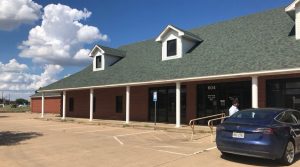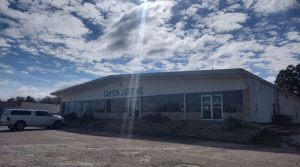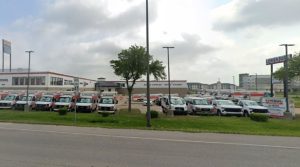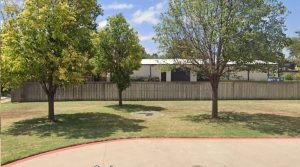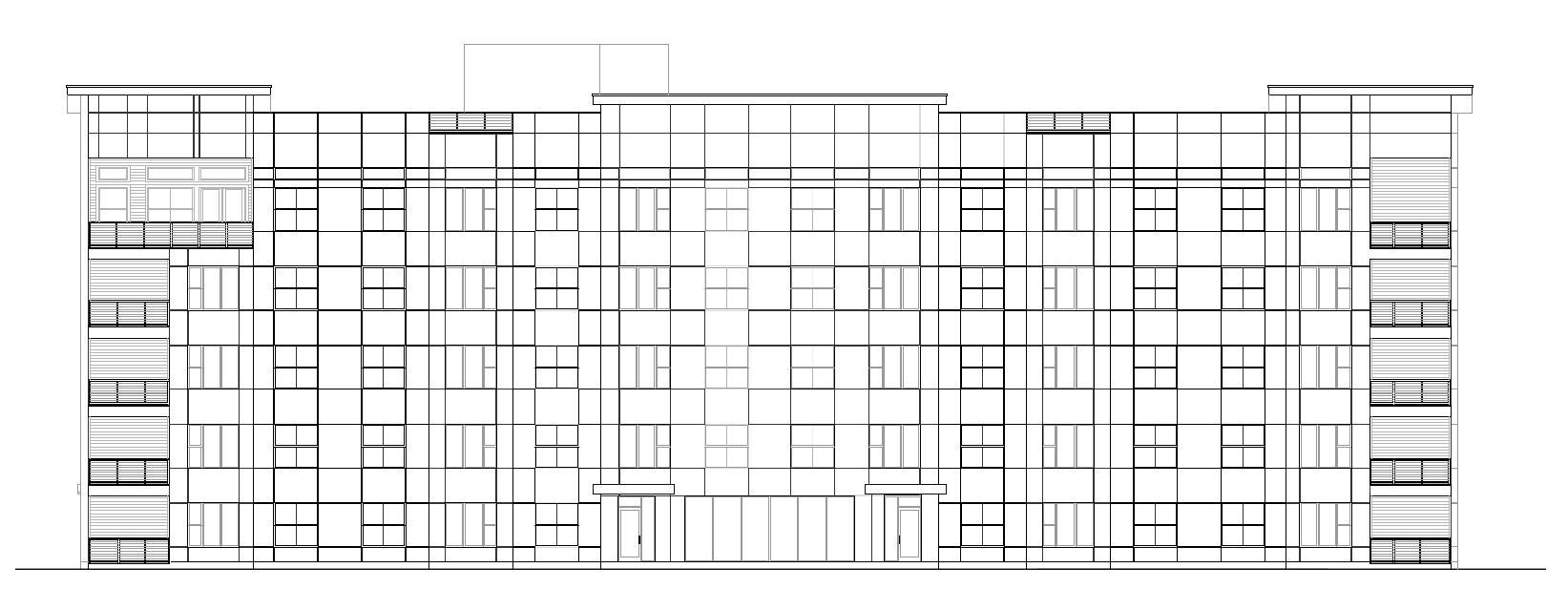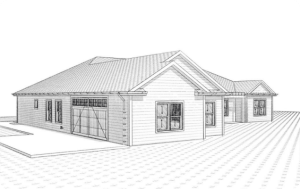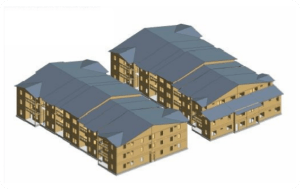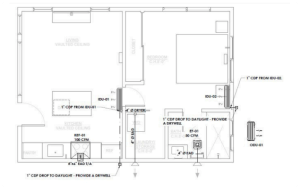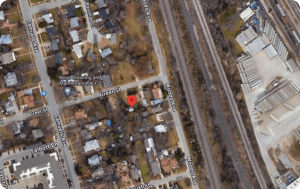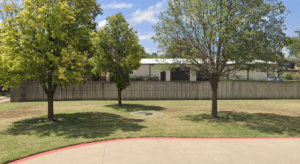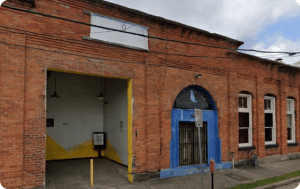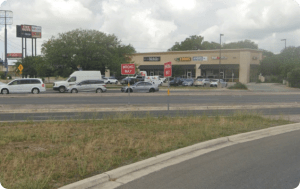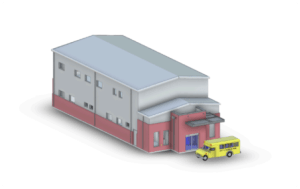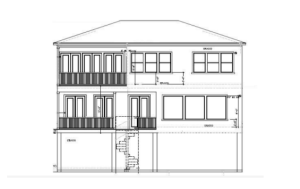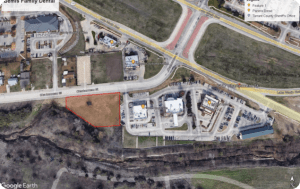Revolutionizing Affordable Housing in Texas: Innovative Structural Design Solutions
The cost of housing continues to be a major challenge for many Americans, especially those living in urban areas. In Texas, the cost of housing has been a particularly pressing issue in recent years, as more and more people flock to the state for job opportunities and a better quality of life. However, a new wave of innovation in affordable housing is quickly changing the game. With the help of innovative structural design solutions, Texas is revolutionizing the way affordable housing is built and maintained. In this post, we’ll explore some of the most exciting developments in affordable housing in Texas and how these innovative solutions are helping to provide safe, comfortable, and affordable homes for people in need. From modular construction and tiny homes to green building practices and smart design, we’ll take a closer look at how these solutions are transforming the affordable housing landscape in Texas for the better.
1. The current state of affordable housing in Texas
The current state of affordable housing in Texas presents both challenges and opportunities. As the Lone Star State experiences rapid population growth and urbanization, the demand for affordable housing continues to surge. However, the supply of affordable housing has not kept pace with this increasing demand, resulting in a housing crisis for many Texans.
In major metropolitan areas such as Austin, Dallas, and Houston, soaring housing prices have made it difficult for low and middle-income individuals and families to find suitable and affordable housing options. This has led to overcrowding, homelessness, and a strain on social services.
One of the reasons for this housing shortage is the lack of innovative and cost-effective solutions in the construction industry. Traditional building methods and materials are often expensive and time-consuming, making it challenging to provide affordable housing on a large scale.
Furthermore, outdated zoning and land-use regulations also contribute to the scarcity of affordable housing options. These regulations often restrict the development of multi-family housing or impose excessive requirements on developers, making it financially unviable to create affordable housing units.
However, amidst these challenges, there is hope for revolutionizing affordable housing in Texas. Innovations in structural design solutions offer the potential to address the housing crisis and provide more affordable options for Texans.
By embracing modern construction techniques, such as modular or prefabricated housing, developers can significantly reduce costs and construction timelines. These methods allow for streamlined production processes, decreased labor expenses, and increased efficiency in utilizing resources.
Additionally, the use of sustainable building materials and energy-efficient designs can contribute to more affordable housing options in the long run. Incorporating green technologies not only reduces the environmental impact but also lowers utility costs for residents, making housing more affordable in the long term.
Furthermore, advocating for changes in zoning and land-use regulations can also play a crucial role in increasing the availability of affordable housing. By encouraging mixed-use developments and reducing unnecessary restrictions, local governments can foster the creation of diverse and affordable housing options.
In conclusion, the current state of affordable housing in Texas presents challenges, but also opportunities for innovation and change. By embracing innovative structural design solutions, adopting sustainable practices, and advocating for policy reforms, Texas can revolutionize affordable housing and ensure that all residents have access to safe, decent, and affordable homes.
2. The challenges and limitations of traditional methods Traditional methods of constructing affordable housing in Texas have often been plagued by numerous challenges and limitations. These conventional approaches, which primarily rely on conventional stick-built construction or pre-fabricated modular units, have struggled to meet the growing demand for affordable housing in the state.
One major challenge is the high cost of materials and labor associated with traditional methods. The rising prices of construction materials, coupled with the shortage of skilled labor, have made it increasingly difficult to deliver affordable housing options to low-income individuals and families. Furthermore, the time-consuming nature of traditional construction processes often leads to delays and increased costs, further exacerbating the affordability issue.
Another limitation is the lack of flexibility in design and customization. Traditional methods often restrict the ability to create innovative and sustainable housing solutions that cater to the unique needs of different communities. This cookie-cutter approach fails to address the diverse requirements and preferences of residents, resulting in a one-size-fits-all approach that may not fully meet their needs.
Additionally, traditional construction methods often struggle to overcome geographical constraints and environmental challenges. Texas, with its diverse landscape and varying weather conditions, requires housing solutions that can withstand extreme weather events, such as hurricanes and floods. Unfortunately, traditional methods may not always provide the necessary resilience and durability to ensure long-term sustainability in the face of such challenges.
In light of these limitations, there is an urgent need for innovative structural design solutions that can revolutionize affordable housing in Texas. By embracing new technologies, materials, and construction techniques, the affordable housing sector can overcome these challenges and create sustainable, cost-effective, and customizable housing options for all Texans.
3. Introduction to innovative structural design solutions
Innovative structural design solutions are transforming the affordable housing landscape in Texas. As the demand for affordable housing continues to rise, architects and engineers are pushing the boundaries of traditional construction methods to create innovative and sustainable solutions.
Gone are the days when affordable housing was synonymous with basic and uninspiring designs. Today, innovative structural design solutions are revolutionizing the way affordable housing is conceptualized, constructed, and experienced by residents.
These design solutions encompass a wide range of approaches, from incorporating eco-friendly materials and energy-efficient systems to maximizing space utilization and enhancing community connectivity. The aim is to create affordable housing that not only meets the basic needs of residents but also provides a comfortable and aesthetically pleasing living environment.
One key aspect of innovative structural design solutions is the utilization of sustainable and cost-effective building materials. This includes the use of recycled materials, such as reclaimed wood or recycled steel, as well as exploring new materials that are both durable and environmentally friendly. By embracing sustainable materials, affordable housing projects can reduce their environmental impact while keeping construction costs in check.
Another aspect of innovative structural design solutions is the emphasis on space optimization. Architects are finding creative ways to maximize living spaces within limited square footage, incorporating multifunctional furniture and clever storage solutions. This not only makes the most of available space but also enhances the functionality and livability of affordable housing units.
Additionally, innovative structural design solutions are focusing on fostering a sense of community within affordable housing developments. Open common spaces, shared amenities, and thoughtful landscaping are all integral parts of these designs, encouraging residents to connect and engage with their neighbors. This sense of community not only enhances the overall living experience but also contributes to the well-being and social cohesion of residents.
In conclusion, innovative structural design solutions are revolutionizing affordable housing in Texas. By incorporating sustainable materials, optimizing space utilization, and fostering community connectivity, these designs are transforming affordable housing into vibrant and desirable communities. As the demand for affordable housing continues to grow, these innovative solutions will play a crucial role in providing sustainable and inclusive housing options for all.
4. Modular construction: A game-changer for affordable housing
Modular construction is proving to be a game-changer in the realm of affordable housing, especially in Texas. With its innovative structural design solutions, this method is revolutionizing the way affordable homes are built and delivered to communities in need.
Traditionally, constructing affordable housing involved lengthy timelines, high costs, and limited design flexibility. However, modular construction has changed the game by offering a more efficient and cost-effective alternative.
In this approach, homes are built off-site in a controlled factory environment, using standardized modules that can be easily transported and assembled on-site. This streamlined process eliminates many of the challenges associated with on-site construction, such as weather delays, material waste, and labor inefficiencies.
One of the key advantages of modular construction is its ability to reduce costs. The controlled factory environment allows for more efficient use of materials and resources, resulting in significant savings. Additionally, the standardized modules can be mass-produced, further driving down costs and making affordable housing more accessible to a larger population.
Another benefit of modular construction is its design flexibility. While affordable housing often faces limitations in terms of design aesthetics, modular construction offers a wide range of customizable options. From floor plans to finishes, homeowners can have a say in the design of their homes, making them feel personalized and unique.
Beyond its cost-efficiency and design flexibility, modular construction also boasts shorter construction timelines. The off-site manufacturing process allows for simultaneous work on multiple modules, significantly reducing the overall construction time. This means that communities in need can benefit from affordable housing options in a shorter period, addressing the urgent housing crisis that many face.
Overall, modular construction is proving to be a game-changer for affordable housing in Texas. Its innovative structural design solutions, cost-efficiency, design flexibility, and shorter construction timelines are transforming the way affordable homes are built and delivered. By embracing this approach, communities can meet the growing demand for affordable housing and make a significant impact on the lives of individuals and families in need.
5. The benefits of modular construction in Texas
Modular construction has gained significant traction in the affordable housing sector in Texas, revolutionizing the way homes are built. This innovative approach offers numerous benefits that make it an appealing choice for developers, homeowners, and communities alike.
One of the primary advantages of modular construction is its cost-effectiveness. By utilizing prefabricated modules that are manufactured in a controlled factory setting, construction time and labor costs are significantly reduced. This streamlined process minimizes the chances of delays and cost overruns, making it an ideal solution for affordable housing projects with tight budgets.
Modular construction also offers greater flexibility and customization options. The modules can be easily configured and combined to create various layouts and architectural designs, allowing for personalized homes that meet the unique needs and preferences of homeowners. This flexibility also extends to future expansions or modifications, as additional modules can be added or removed with relative ease.
In addition to cost and flexibility, modular construction is known for its superior quality and durability. The modules are constructed using high-quality materials and undergo rigorous quality control measures in the factory. This ensures that the homes are built to withstand Texas’ harsh weather conditions, including hurricanes, high winds, and extreme temperatures. With their robust construction, modular homes often surpass traditional stick-built homes in terms of strength and resilience.
Another advantage of modular construction is its reduced environmental impact. The controlled factory environment enables efficient material usage and waste management practices. Moreover, the ability to prefabricate modules off-site minimizes disruption to the surrounding environment during the construction process. Additionally, modular homes can incorporate energy-efficient features, such as insulation, HVAC systems, and solar panels, further reducing their carbon footprint and utility costs.
Overall, the benefits of modular construction in Texas are undeniable. Its cost-effectiveness, flexibility, quality, and sustainability make it an attractive option for affordable housing projects. As this innovative structural design solution continues to gain popularity, it has the potential to transform the housing landscape in Texas, providing accessible and sustainable homes for individuals and families across the state.
6. Sustainable building materials and techniques for affordable housing
When it comes to affordable housing, sustainability is key. Incorporating sustainable building materials and techniques not only helps the environment but also ensures long-term cost savings and durability for affordable housing projects in Texas.
One innovative solution is the use of recycled or reclaimed materials. These materials not only reduce waste and landfill usage but also offer unique aesthetic qualities. For example, using reclaimed wood for flooring or furniture adds character and warmth to a space while promoting sustainability.
Another sustainable technique is the integration of energy-efficient systems. Incorporating solar panels, energy-efficient appliances, and LED lighting can significantly reduce energy consumption and utility costs for residents. These features not only make the housing more affordable to maintain but also contribute to a greener and more sustainable future.
Furthermore, utilizing sustainable landscaping practices can enhance the overall sustainability of affordable housing projects. Implementing rainwater harvesting systems, native plantings, and permeable surfaces can help conserve water, reduce runoff, and create a more eco-friendly and visually appealing environment for residents.
Innovative structural design solutions such as modular construction also play a significant role in revolutionizing affordable housing. Prefabricated modules can be mass-produced off-site, reducing construction time and costs. Additionally, modular construction allows for flexibility and adaptability, making it easier to accommodate changing housing needs or repurpose units in the future.
By integrating these sustainable building materials and techniques, affordable housing in Texas can become not only more environmentally friendly but also more economically viable and socially responsible. It is an opportunity to create homes that are not only affordable but also sustainable, comfortable, and resilient for those in need.
7. Case studies of successful affordable housing projects using innovative design solutions
In this section, we will explore some inspiring case studies of successful affordable housing projects that have embraced innovative design solutions to revolutionize the housing landscape in Texas. These projects have not only provided much-needed housing for low-income individuals and families but have also raised the bar for quality, sustainability, and community integration.
One exemplary case study is the “Greenway Village” project in Austin. This development incorporates sustainable design principles, such as passive solar orientation, energy-efficient construction materials, and rainwater harvesting systems. By integrating green spaces and communal areas, Greenway Village fosters a sense of community and promotes social interaction among residents.
Another notable project is the “Modular Heights” initiative in Dallas. By utilizing modular construction techniques, this development drastically reduces construction costs and accelerates the building process. The modular units are designed to be easily transportable, allowing for flexibility in location and future expansion. This innovative approach has enabled the creation of affordable housing units in areas with limited available land, addressing the urban housing crisis.
The “Inclusionary Design” project in Houston is another prime example of innovative design solutions for affordable housing. This development incorporates mixed-income housing, seamlessly blending affordable units with market-rate apartments. The architectural design integrates shared amenities and common spaces, creating opportunities for interaction and fostering a sense of inclusivity among residents.
Lastly, the “Micro Homes” project in San Antonio showcases the power of compact and efficient design solutions. These tiny homes maximize every square foot, utilizing smart storage solutions and multifunctional furniture. By embracing minimalist living, this project offers affordable housing options that are not only sustainable but also promote a simpler and more environmentally conscious lifestyle.
These case studies highlight the transformative potential of innovative design solutions in revolutionizing affordable housing in Texas. By prioritizing sustainability, community integration, and efficient use of resources, these projects are paving the way for a more inclusive and vibrant housing landscape, ensuring that everyone has access to safe, comfortable, and affordable homes.
8. The role of technology in revolutionizing affordable housing
In today’s rapidly evolving world, technology plays a crucial role in revolutionizing various industries, and affordable housing is no exception. The integration of technology into the design and construction process has opened up new possibilities and solutions that were previously unimaginable.
One of the key areas where technology has brought about significant advancements is in the use of sustainable and energy-efficient materials. With the growing concern for environmental sustainability, architects and engineers are now able to incorporate innovative materials into the construction of affordable housing. From recycled building materials to energy-efficient insulation systems, these technological advancements not only reduce the carbon footprint of affordable housing but also contribute to long-term cost savings for residents.
Moreover, the use of digital tools and software has greatly enhanced the efficiency and accuracy of the design and construction process. Computer-aided design (CAD) software allows architects and engineers to create detailed 3D models, enabling them to visualize and optimize the layout and functionality of affordable housing projects. This not only streamlines the design process but also minimizes errors and reduces construction time.
Another technological innovation that is revolutionizing affordable housing is the implementation of smart home technologies. These technologies utilize internet connectivity and automation to enhance the comfort, convenience, and security of residents while also promoting energy efficiency. From smart thermostats and lighting systems to integrated home security systems, these technologies are making affordable housing more attractive and livable for residents.
Furthermore, the use of prefabricated and modular construction techniques has gained traction in the affordable housing sector. These methods involve the manufacturing of building components off-site, which are then transported and assembled on-site. This approach significantly reduces construction time and costs while ensuring consistent quality control. Additionally, prefabricated construction allows for greater flexibility in design, enabling architects to create unique and aesthetically pleasing affordable housing solutions.
In conclusion, technology has revolutionized the affordable housing sector in Texas by introducing innovative structural design solutions. From sustainable materials and digital design tools to smart home technologies and prefabricated construction techniques, these advancements have not only improved the affordability and energy efficiency of housing but also enhanced the overall quality of life for residents. As technology continues to evolve, the possibilities for revolutionizing affordable housing are endless, creating a brighter future for communities in need of safe, comfortable, and sustainable housing options.
9. Overcoming hurdles and implementing change in the affordable housing sector
Implementing change in the affordable housing sector can be a challenging task, but it is crucial to revolutionize the way we approach housing solutions for low-income individuals and families. Texas, like many other states, faces significant hurdles in providing affordable housing options to its residents. However, with innovative structural design solutions, these hurdles can be overcome.
One of the main challenges in the affordable housing sector is the lack of funding. Traditional construction methods can be expensive, making it difficult to create affordable housing units that meet the needs of the community. However, by adopting innovative approaches, such as modular construction or using sustainable and cost-effective materials, it is possible to reduce construction costs significantly.
Another hurdle is the availability of suitable land for affordable housing projects. In many urban areas, land prices are skyrocketing, making it nearly impossible to find affordable parcels of land for development. However, creative solutions such as repurposing underutilized or abandoned buildings, revitalizing vacant lots, or establishing partnerships with local governments can help overcome this challenge.
Additionally, there is often a stigma attached to affordable housing, leading to resistance from communities or local authorities. However, by promoting inclusivity, educating the public about the importance of affordable housing, and highlighting the benefits it brings to the community as a whole, this resistance can be addressed and change can be embraced.
Furthermore, collaboration between various stakeholders, including government agencies, nonprofit organizations, developers, and community members, is essential to successfully implement change in the affordable housing sector. By working together, sharing resources and expertise, and leveraging each other’s strengths, innovative ideas can be brought to life.
Revolutionizing affordable housing in Texas requires a shift in mindset, a willingness to explore new approaches, and a commitment to creating sustainable, safe, and well-designed housing options for all. By overcoming these hurdles and implementing change, we can ensure that every individual and family in Texas has access to affordable and dignified housing, improving their quality of life and creating a stronger and more equitable community for all.
10. The future of affordable housing in Texas: Opportunities and possibilities
The future of affordable housing in Texas holds immense opportunities and exciting possibilities. With the growing need for affordable housing, forward-thinking individuals and organizations are embracing innovative structural design solutions to revolutionize the housing landscape.
One such opportunity lies in the utilization of sustainable and eco-friendly materials. As the world becomes more conscious of the environmental impact of construction, there is a shift towards incorporating renewable resources and energy-efficient technologies in affordable housing projects. From utilizing solar panels and rainwater harvesting systems to constructing buildings with recycled materials, these design solutions not only reduce the ecological footprint but also lower utility costs for residents.
Furthermore, advancements in modular construction techniques offer a promising avenue for affordable housing in Texas. By prefabricating and assembling building components off-site, construction time and costs are significantly reduced. This allows for faster completion of projects and the ability to meet the ever-increasing demand for housing. Additionally, modular construction allows for greater flexibility in design, making it easier to adapt to changing needs and preferences.
The integration of smart home technologies is another exciting possibility for the future of affordable housing. From energy-efficient lighting and automated temperature control to smart security systems and remote access, these technologies enhance the quality of life for residents while reducing energy consumption. This not only improves the affordability of housing but also promotes sustainable living practices.
Moreover, collaborative efforts between public and private sectors can create unique opportunities for affordable housing solutions. By leveraging public resources and expertise, combined with the innovation and efficiency of private enterprises, Texas can witness the development of affordable housing projects that cater to the diverse needs of its growing population.
In conclusion, the future of affordable housing in Texas is brimming with opportunities and possibilities. By embracing innovative structural design solutions, incorporating sustainable materials and technologies, and fostering collaborative efforts, Texas can pave the way for a new era of affordable housing that is not only cost-effective but also environmentally conscious and socially inclusive.
We hope you found our article on revolutionizing affordable housing in Texas through innovative structural design solutions inspiring. By exploring the creative possibilities of design, we can address the pressing issue of affordable housing and make a positive impact on communities. From modular construction to sustainable materials, we have highlighted various solutions that can make housing more accessible and affordable for all. Together, let’s continue to push boundaries and create a brighter future for affordable housing in Texas and beyond.


